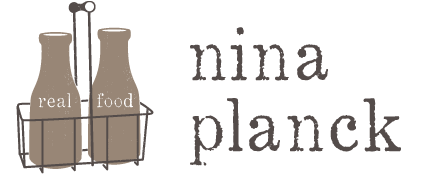The Reading List
4/24/06
After my book was safely at the printer, I took a break from food and farming reading. My inbox is full of new cholesterol studies - and I will read them, eventually - but since the manuscript left my hands I've been reading Flaubert, various long-forgotten fiction from a London publisher I love, Persephone Books, James Surowiecki's Wisdom of Crowds, Thorstein Veblen on Conspicuous Consumption, The Prince, and Baldesar Castiglione on how to be a great 15th century courtier, or (in Victorian times) a gentleman, or (in our own times) a Catch. I haven't read Machiavelli since high school, but he doesn't deserve his reputation for ruthlessness. It's more a primer for the effective yet ethical prince.
Everywhere I look, though, the books are brimming with lessons on food and farming. In Margharita Laski's Victorian Chaise-Longue, the heroine is dying gracefully, of tuberculosis. What I need to get well, she tells the fancy doctors (in vain) is fresh air, sunshine, and clean milk. In 1864, that would be raw milk, which 19th century European and 20th century American doctors used in the Milk Cure. Quarts of whole raw milk made the scrawny muscular and the flabby firm, all while healing all manner of infections, including TB.
In Conspicuous Consumption (1899) Veblen explains that in the leisure class (was he the first to call it that?) status depends on visible leisure and spending. Servants, fine food and drink, the study of dead languages, sports, fast horses, and (especially) women to consume all this and more, conspicuously, on one's behalf - all are markers of prestige because they aren't productive, or, as Veblen often puts it, they're 'useless' in industrial or practical terms. A favorite status symbol is the rolling green lawn - it resembles a pasture, but the absence of cows renders the greenery reassuringly useless: 'the vulgar suggestion of thrift, which is nearly inseparable from the cow, is a standing objection to the decorative use of this animal.'
She may be vulgar to the leisure class, but I'm a fan of the family cow because of her thrift. She turns pure grass into pure cream and butter, a trick we omnivores cannot perform. I wish I'd read Veblen before writing, in Real Food, 'Now that I live in the city and pay good money for real milk and cream, the significance of the cow is tangible. Mabel made us richer...with Mabel, milk was free and life was good.'
A cow is no use to the leisure class, but she's of great use to families all over America. No one understand this better than Joann Grohman, an expert in the one- or two-cow dairy.
But I knew my food-and-farming reading holiday was near an end, because on April 10th, what will certainly be the year's best food and farming book fell into my hands: The Omnivore's Dilemma, by Michael Pollan.
It's a towering piece of reporting - and a beautiful, seamless narrative - on every issue of importance in food and farming. Pollan understand the food chain from start to finish, and if he's a little behind the times on butter - saturated fats are not less bad for you than trans fats, as so many people think; they are positively good for you - all is forgiven.
Pollan is light years ahead of other writers (and, God knows, the USDA) on grass farming, local food, and most of all, on corn, which he calls 'the keystone species of the industrial food system.' So prepared was I to find his new book indispensable, I put The Omnivore's Dilemma straight into my bibliography, sight unseen. All my hopes are justified. Stay tuned for another entry on the People Made of Corn, courtesy of Pollan's first-class reporting.

